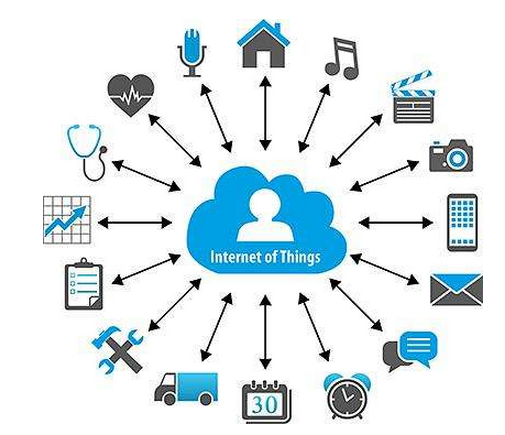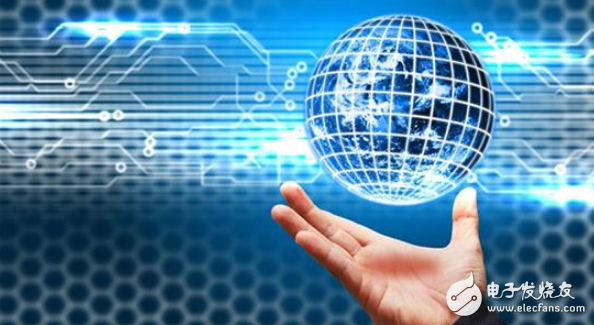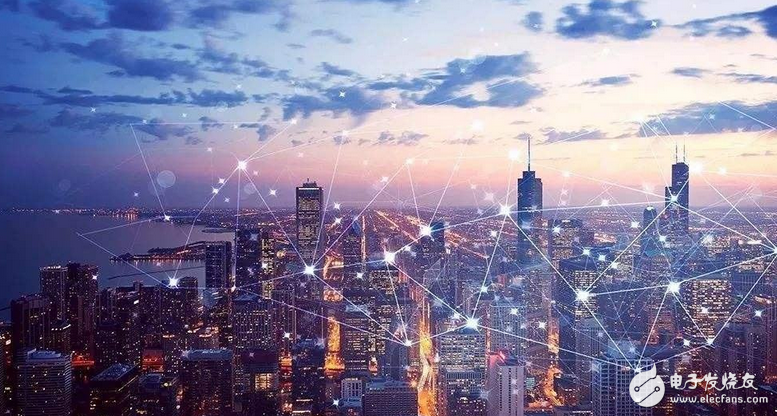The core of the Internet of Things lies in the deployment of sensors, trillions of sensors are embedded in every corner, and the collected data is intelligently analyzed using AI to make physical devices alive. It can be said that small sensors drive digital transformation, so that everything can be quantified. Enterprises have the ability to obtain unlimited data and realize rapid innovation through insights, which can further drive manufacturing upgrades. Even based on massive data, regions can gain insights into the future commercial economy. The Internet of Things is usually divided into three levels: perception, transmission and application. The perception layer is mainly based on sensors, RFID, etc., which is a key part of information collection. Sensors are also known as the five senses in the era of the Internet of Things; the transmission layer is operated by communication. Businesses are the leading factor, so the communication giants have long been racing in the IoT industry, hoping to dominate this field; but in the eyes of Yang Jianyong, who has been paying attention to the IoT industry for a long time, the core value of the IoT lies in the application layer. In the era of the Internet of Everything, the core value point of the Internet of Things industry is the data collected through sensors and finally aggregated into application layer data processing. Sensor deployment is the foundation of the Internet of Things It has been more than 20 years since the Internet of Things was proposed, but the scale of sensor deployment has not been widespread, resulting in insufficient physical layers, resulting in insufficient data, and restricting industrial development from the source. Sensor deployment is the infrastructure of the Internet of Things. Many years ago, a country proposed a trillion sensor revolution, aiming to promote the use of 1 trillion sensors in social infrastructure and public services every year, and it is expected that 100 trillion sensors will be embedded in after 2030. Various places. In the era of the Internet of Things, tens of millions of sensors are embedded in various devices in the real world, such as mobile terminals, smart meters, buildings, and various industrial machines. After various devices are connected to the Internet, how can the data generated? It is more important to clarify the data and dig out the value. Sensors are deployed in every corner of the city, making it possible to continuously and dynamically collect, measure, analyze and optimize city operations, and bring comprehensive applications based on data-driven new smart cities, making city operations truly "smart". At the same time, cloud computing provides storage for the massive data generated by the Internet of Things and is the cornerstone of the development of the Internet of Things. In the process of driverless business, sensors are the brains of driverless cars. By deploying a series of sensor combinations to perceive the surrounding environment, driverless driving becomes a reality. Internet of Things veteran Yang Jianyong pointed out: “Small sensors are driving digital changes, and factories bring a brand new industrial revolution in the background of digitalization. From ubiquitous smart cameras to various sensors deployed in every corner of the city, This data is collected and processed by cloud AI technology, which will help improve the ability of urban public management such as traffic and streets." Sensor technology has created a new era of smart cities to enhance the ability of refined urban management. Intel gave an application case in American cities. San Diego deployed smart networks throughout the city to optimize transportation and parking systems and improve energy management systems. In this regard, San Diego Mayor Kevin Faulconer said that new technologies will give cities and developers the opportunity to make our communities safer and smarter. Mass deployment of sensors is the key to popularization of the Internet of Things The Internet of Things has become the development trend of information technology. Various smart devices will be used as the carrier of sensors to realize the seamless interaction between humans, machines, and the cloud. A more advanced point is to realize "scene perception", so that smart devices have "smart" and interact with AI. The combination of the two will further supplement and extend the human body's perception ability. Perception will be a new trend in IoT devices. Soon many smart devices will have certain "perception" functions. But there is a problem, which is to supply power to various smart devices. However, some scientists use "network signals" to supply power in experiments, such as wireless temperature sensors, which obtain energy from radio waves to form its wireless network. It only needs Get energy from a nearby router, and once there is enough power, the network starts to work. The most gratifying thing is that this sensor is very small and very cheap (about 20 cents). This almost invisible sensor can completely control your smart home on the device. As the core of the Internet of Things lies in sensors, and the deployment of "trillion sensors" must rely on low power consumption (or the sensors themselves have power supply functions) and low prices. If such low-cost and wireless-wave-powered sensors can be popularized, the Internet of Things architecture Fundamental changes will be found, and increasingly mature sensor technologies are expected to enter the market as soon as possible. Acquiring and using data is the value of the Internet of Things The core of the development of the Internet of Things lies in the deployment of sensors. Over the years, due to the widespread application of the Internet of Things, the sensor industry has ushered in a huge development opportunity. According to data, the global sensor market is expected to reach 266 billion US dollars this year, especially the rapid domestic growth. With the rapid growth of sensor deployment and the vigorous development of the Internet of Things, the core of the data generated is to clarify the data and dig out the value, which provides a solid foundation for the development of cloud platforms. The cloud provides data generated after various devices are connected to the Internet. Storage, management, analysis, etc. The core of the cloud platform lies in the data distribution center. Utilizing the data collected by the Internet of Everything will give birth to many innovative business models and applications, which is the cornerstone of the development of the Internet of Things industry. And cloud service providers such as Amazon and Alibaba Cloud have realized the integration of cloud, end, and device to share in the entire industry chain, helping enterprises to achieve global IoT operations. Just because cloud computing can provide a powerful computing platform for the massive data generated by the Internet of Things, it is the key to the development of the Internet of Things, and cloud service providers have taken the lead in seizing the opportunity. As sensors are deployed on a larger scale, the potential value of the collected big data will be gradually tapped. Data generation, collection, processing, decision-making and application. It can be said that the Internet of Things is an industry driven by "data" . That is to say, the massive data generated by the Internet of Everything is processed and analyzed intelligently, and finally products or services are formed through the data. It is the core business value of the Internet of Things that will also create more innovative business opportunities for the society. Various smart devices will be used as the carrier of sensors to realize the seamless interaction between humans, machines, and the cloud, so that smart devices have "smart", especially when combined with artificial intelligence technology to further supplement and extend the perception capabilities. Shenzhen Kaixuanye Technology Co., Ltd. , https://www.icoilne.com

